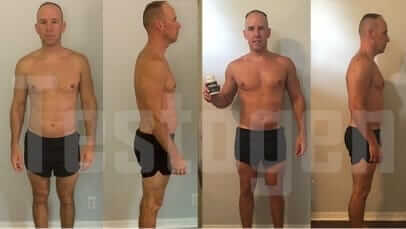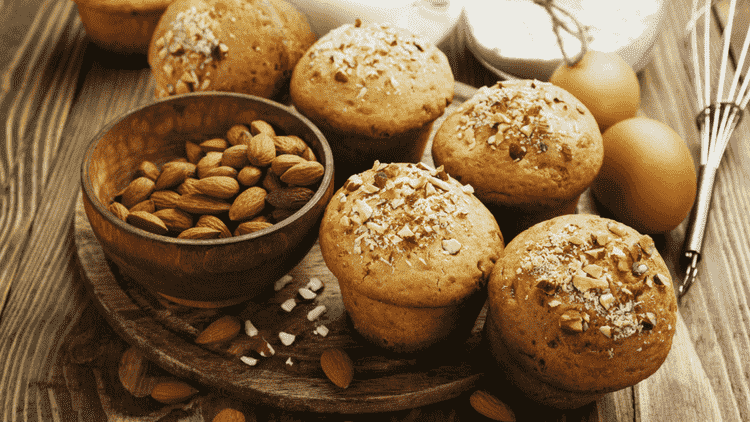Sports nutrition is such a heavily debated topic, no matter what gym you go into anywhere in the country we guarantee you will find gym rats with a whole range of beliefs on what is correct and a whole lot of strong opinions on what’s not correct.
As with training methods, those who are immersed in gym culture for years often find that they develop an almost religious set of beliefs when it comes to nutrition. These adamant beliefs manifest over time, and as these gym rats share their wisdom with newcomers, their beliefs become widely accepted myths.
Some of our favorite sports nutrition myths that are still widely accepted today are:
The 30-minute anabolic window
For those who don’t know, the 30-minute anabolic window is a hotly debated belief that once you have completed your training session you have 30 minutes to consume your post-workout shake (ideally protein and carbs) or your workout is pointless.
The whole premise of this anabolic window is that your body has been forced into a catabolic state via training and won’t have the nutrients to refuel if you don’t immediately give it some, rendering your entire workout void.
But this just isn’t true. While we do preach the importance of post-workout nutrition and its benefits for muscle recovery and growth, as well as replenishing muscle glycogen stores, the notion that your workout will become null if you don’t drink a post-workout shake is somewhat misguided.
There is a lot of research which states that post training, our bodies are in an optimal state to absorb nutrients such as carbs and protein; however, not getting them within 30 minutes shouldn’t be too big an issue. Most research has found that, provided you aren’t training fasted, you’re fine to have a window of up to 2 hours to drink your post-workout shake without fear of losing those hard-earned gains.
Low-GI carbs are best
Unprocessed is always better – wholemeal pasta, brown rice, sweet potatoes. Eating only unrefined carbs or low-GI is another widely accepted sports nutrition myth. And this myth, for the most part, we do agree with! However, it’s the context which is incorrect.
Most people know that brown rice has more nutritional value than white rice, as it has the husk and thus more fiber. But it also digests significantly more slowly than white rice. Now, most people might say, “But isn’t that what we want?” And the answer is yes and no. Throughout the day, when you’re consuming carbohydrates, a slower-digesting source is generally a better option. But around training, we want something fast! This is when the higher-GI grains such as white rice come into play. The higher GI means that they will digest much faster and fuel muscle glycogen faster, priming your body for training. Typically, these higher-GI carb sources are best consumed pre/intra/post-training and your lower-GI carbs during the rest of the day, should you choose to have them.
Clean eating
The most widely debated topic in sports nutrition – clean eating. A topic that can turn friends into enemies and cause year-long arguments online. But why is clean eating so hotly discussed and what makes it a myth?
The premise of clean eating is relatively simple: You consume only foods which are considered to be “clean” – and no, that doesn’t mean spraying Windex on them first! “Clean” foods are best described as those which are unprocessed and have a high nutritional content. So, for proteins, things like white fish and chicken; for carbohydrates, brown rice and sweet potato; and then, typically, excessive amounts of broccoli or green beans. This, in a nutshell, is a “clean eating” diet.
So why is it so hotly debated? For the most part, the clean eating diet was widely accepted for decades as the only way to grow muscle mass. Pro bodybuilders’ diet plans consisted of things such as “the 7 foods that work,” and this had a knock-on effect to the point where it became widely accepted that if you wanted to get big and get on stage, you had to eat those “clean” foods 7+ times a day.
The debate started as we moved into the internet generation and more information became widely available. A trend towards a more flexible dieting approach emerged – the theory that the actual foods you consumed didn’t matter, it was all about their total calorie content. Provided you stayed within your set calorie goal you could achieve results, regardless of whether those calories were coming from sweet potatoes and rice or Big Macs.
Unfortunately for clean eaters, science tended to favor the flexible approach. Now it’s generally accepted that it’s only by factoring in calories consumed that you can lose weight – even eating “dirty” foods, provided you eat less than your body requires. However, you’re recommended to use a mixed approach in which you consume the majority of your calories from “clean” foods – as these are very micronutrient-dense – and then give yourself the chance to be flexible from time to time and eat foods which you wouldn’t normally have, such as sweets.
Healthy One-Pot Spicy Chicken And Rice >>
So there’s our 3 Common Sports Nutrition Myths Debunked! As with any bodybuilding tip, next time the buff guy at the gym gives you advice, make sure you check in with Muscle Club or search online to see whether that advice is true or just another fitness myth.






